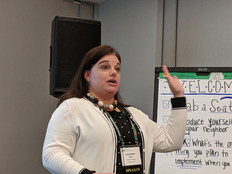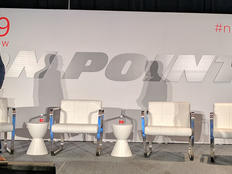The Ongoing Quest for Stadium Wi-Fi Greatness
Want to consider a network admin’s worst nightmare? How about building, supporting and maintaining a Wi-Fi network that can handle over 20,000 users as they upload 8-megapixel images, stream instant-replay videos and constantly refresh their Twitter feeds?
Providing fans with a wireless experience that mirrors what they enjoy at home has been such an uphill battle, some sports executives doubt the technology is capable of making it happen.
“The technology just isn’t there yet,” said Scott O’Neil, former president of Madison Square Garden Sports, during a session at the On Deck Sports & Technology Conference.
Not quite. But even if the technology is not yet mainstream, there are several bold, brave and innovative technologists and companies that are working hard to tackle the Wi-Fi dilemma for sports fans.
The San Francisco 49ers’ IT Team Has Wi-Fi Hopes for 2014
Fans of the San Francisco 49ers might still be a little sore about their loss to the Baltimore Ravens at Super Bowl XLVII, but the 49ers’ IT team is diligently striving “to build the greatest stadium Wi-Fi network of all time,” according to a report from Ars Technica.
How do they plan to accomplish it? By tapping new access points that use the 802.11ac protocol and transmit at the 5 GHz band and by taking pages from Facebook’s innovative data-center designs. Last May, after successful stints at Facebook, Dan Williams joined the football team’s IT staff as director, and Kunal Malik came on board to serve as CTO.
Having mastered the secrets of IT support for the social network’s 1 billion users, the two men didn’t flinch at the idea of supporting 60,000-plus fans on the stadium’s Wi-Fi network. The story from Ars points out one way that Facebook is inspiring the team’s wireless ambitions:
Williams and Malik have built the 49ers' network in Facebook's image. That means each service—Wi-Fi, point-of-sale, IPTV, etc.—gets its own autonomous domain, a different physical switching system to provide it bandwidth. That way, problems or slowdowns in one service do not affect another one.
The goal is to get the new network up and running by the 2014 NFL season, so the 49ers’ IT team definitely has its work cut out. But despite the daunting challenge, the staff believes the network is worth fighting for.
"This is an opportunity to change the way the world consumes live sports in a stadium," Malik said. "The technology problems live sports has today are unsolved and no one has ever done what we are attempting to do here. That's what gets me out of bed every day."
Dodgers Stadium in Search of Wireless Home Run
In January, the Los Angeles Dodgers announced that the team would be rolling out more than $100 million in upgrades throughout Dodger Stadium. As part of this package, the venue will finally, as a reporter for the Culver City Patch put it, no longer be a “Wi-Fi dead zone.”
Specifics about the new wireless network haven’t been released yet, but Dodgers CEO Stan Kasten promises that by June the venue “will have the most elaborate and most extensive Wi-Fi network anywhere in baseball."
Georgia Dome Gets High-Density with Cisco
During the NFL’s NFC Championship Game, the Georgia Dome was able to support 8,800 concurrent users on its Wi-Fi network without breaking a sweat, according to Sam Brown, IT director for the Georgia Dome.
The great part is that 8,800 concurrent users isn’t the stadium’s maximum. As use expands, the Georgia Dome can increase its capacity by purchasing more licenses from Cisco Systems. Brown and the Georgia Dome staff explained more about their upgrade in a recent case study.
The Georgia Dome rolled out Cisco’s High-Density Wi-Fi solution in its stadium at the start of the 2012 NFL season. The solution is specifically designed to deploy wireless coverage in stadiums, and its access points are connected to antennas that establish “micro cells” throughout the venue. These micro cells are able to target specific seats and sections, which ensures there aren’t any Wi-Fi dead zones in certain sections of the venue.
As host of the 2013 Final Four games, college basketball fans will be able to enjoy the fruits of the Peach State’s wireless wonder. (For more information on the stadium technology available during March Madness 2013, view this infographic from BizTech.)
With the wireless-technology achievements of these three stadiums, it seems that sporting events of the future will indeed be well connected.








